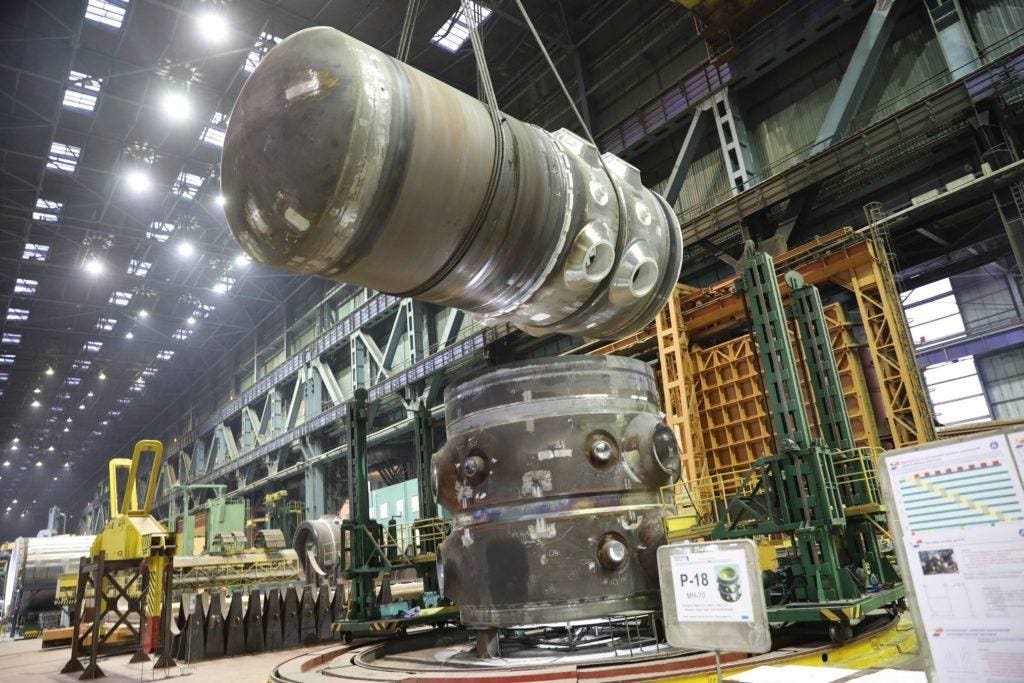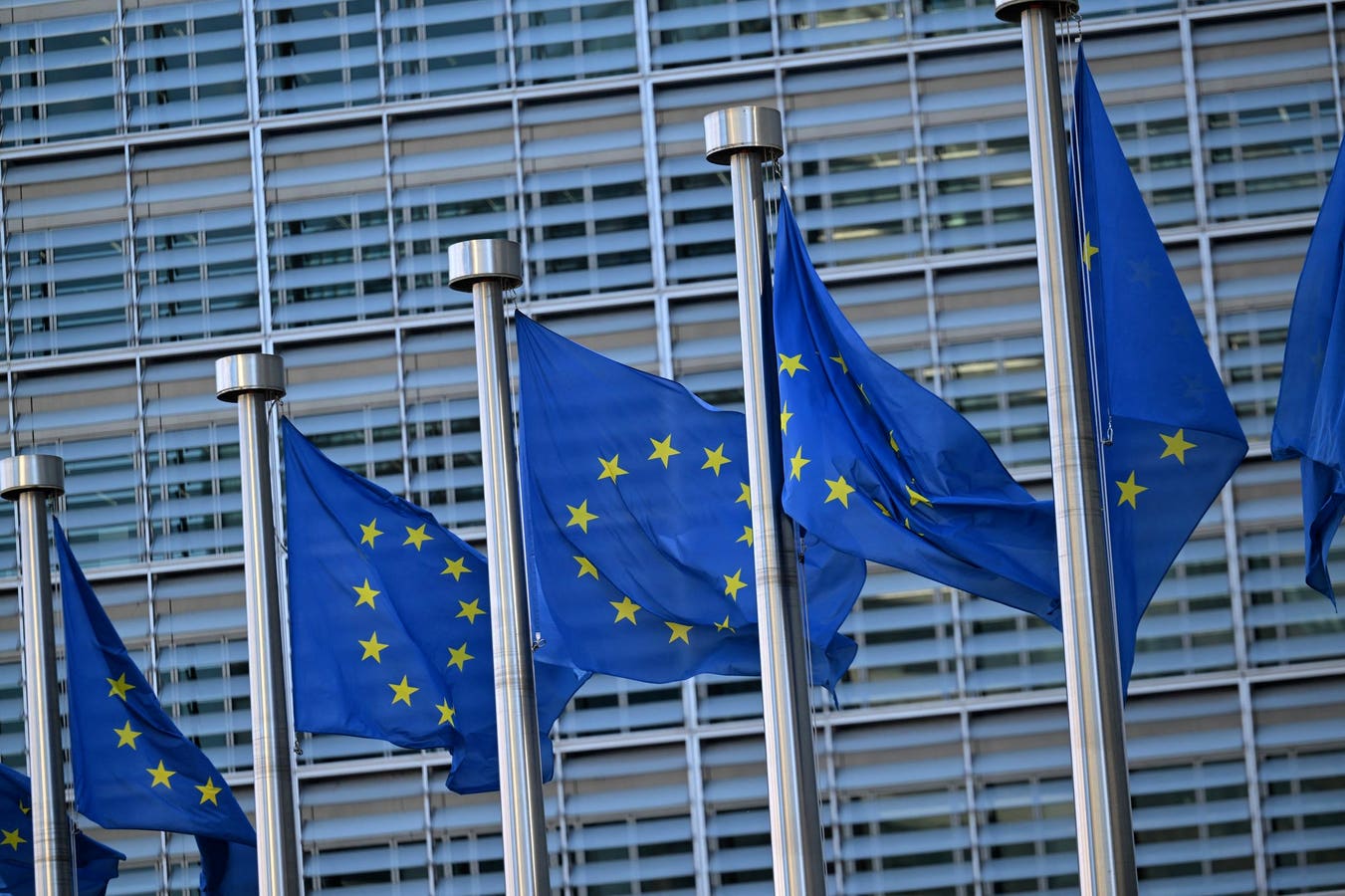This last year has seen diverging paths among nations in their energy policies, but a global point of agreement is that nuclear power is no longer an optional, but rather critical component of the Ai future and this 4th Industrial Revolution. Putting aside public health and net-zero concerns, the leaders of industry and the politicians they influence recognize that the energy needs of the future won’t be powered by fossil fuels alone. From the other side, wind has been shown to be less favorable than solar, and both of these renewables have the intermittency problem. Batteries or pumped hydro (or flywheel or gravity systems) will need to store the excess power and fill the gaps for those shady days. Nuclear power by contrast can run at full capacity 24/7, and it’s best criticisms nowadays relate to water usage and securing initial capital. These problems are being addressed with innovative new designs, international cooperation agreements, and massive state subsidization.
East vs West
The United States and the United Kingdom have enabled the Atlantic Partnership for Advanced Nuclear Energy, which will support investment and shorten approval times for reactor designs. If a reactor has been approved in one country, then it can be fast tracked for the other, which could halve the approval time (3-4 years down to 2). At least ten companies have announced transatlantic deals, and many of them may benefit from subsidies like Last Energy, set to receive $109 million dollars of subsidy free investment. Rolls Royce has Small Modular Reactor (SMR) designs pending in America and has welcomed the news, as has Bill Gates’ TerraPower which is now looking at sites in the UK for its natrium reactors and energy storage systems.
The US-UK agreement will extend to fusion and it compliments the DOE’s announcement earlier this month of $134 million to fund two fusion programs. This in turn comes only a few months after the launch of the China Fusion Energy Company, a dedicated fusion company under China’s main nuclear power enterprise, China National Nuclear Corporation (CNNC). Even the most fossil fuel funded American senator has to recognize that in this period of exponential technological advancement, to act slowly is to cede our future. Ai is the future, and it needs energy that neither coal nor LNG can supply. Where companies do run Ai data centers with gas generators, it’s indisputably to the detriment of local residents’ air quality and general health. Losing the race for Ai dominance by losing the race for nuclear power supremacy while diminishing the wellbeing (and economic productivity in turn) of your citizenry is poor national security strategy.
China and Russia continue to build on their history of nuclear cooperation, not only to make China the largest producer of nuclear power, but to put a reactor on the moon by 2035. Following this announcement earlier in the year, NASA has since declared that it will have a reactor on the moon by 2030. This accelerates a plan to put a reactor in orbit, and its stated purpose is to counter the exclusionary zones that would surround the Russia-China project. If these plans go ahead on schedule, they’ll lay the groundwork for oxygen and water production, which itself is the first step for moon colonization. Permanent human moon bases might be in sight, and the first step will be dense, long-lasting energy.

The VVER-1200 reactor unit is designed to withstand extreme, low-probability events, such as magnitude 9 earthquakes, tornadoes and hurricanes with wind speeds up to 60 m/s, tsunamis, and waves up to 10 meters high. The design incorporates independent — active and passive — safety systems. Active safety systems are intended to quickly respond to possible accidents and emergencies. Passive safety systems function without operator intervention and even without power. Its design life is 60 years, extendable by another 20.
Rosatom
Nuclear Diplomacy
If we can put nuclear reactors on the moon, then we can bring them to our developing friends and allies. In doing so we offer more than clean energy, as inherent to nuclear power are technical skills, stable and lucrative jobs, and stimulated industrial advancement. In doing so, this partner would leverage decades of soft power over this country, useful for favorable trade deals and political support on the world stage. In the age of critical mineral scarcity and Artic competition, all of this is useful if not necessary.
Rosatom offers a “turnkey” nuclear power program to seemingly anyone who wants it. They’re the only company that can build and close a nuclear power plant and handle all of the steps in between, from uranium mining to waste disposal. Russia is happy to bring in their own workers while training local technicians. The ability to handle every step of the nuclear life cycle gives the Russian state an appealing offer to anyone who wants to spur domestic innovation. Rosatom has helped build 39 power units in 10 countries, with projects in over 50. Vietnam, Mali and Myanmar (yes, still in a civil and proxy war) have signed agreements with Russia this year. If any developing nation wanted to move away from awful, self-defeating hydropower dams, they’ll likely find the Russians happy to help.
If America wanted to escalate its presence in this sphere, Westinghouse and its AP1000, or any of the emerging SMRs, would foster innovation and healthy competition.
I’ve never been shy about my opposition to hydropower dams as they destroy forests, animals, and are generally terrible for the environment and wider society. I’ve been advocating for Cambodia (where I’ve worked for 25 years) to investigate the possibility of using nuclear power as a way to drive innovation and sustainable development, and I’m happy to hear that the Russians are funding an “Information Center for Nuclear Studies.” The Cambodian government recognizes that without technical and economic progress they’ll be left behind their two larger and more populous neighbors. Thailand (not too friendly at the moment) and Vietnam are both investing in nuclear power. I’ll eagerly await further announcement from the Royal Government on this matter, as I’m sure will many a Cambodian citizen tired of paying industrialists to build subsidized, destructive hydropower. This path can’t continue and signs from the Cambodian Government are encouraging. Some agreements with China and Russia go back to 2016, and with this foundation perhaps combined Russian Chinese help could be welcome.
One Hualong One unit can generate over 10 billion kilowatt-hours of electricity annually, enough to meet the production and living electricity needs of one million people. Financing options are available.
China National Nuclear Corporation (CNNC)
If China can fund all of these hydropower dams, then they can help with a Hualong One reactor. It’s the most deployed third-generation nuclear reactor design worldwide, and China has cooperation agreements with more than 20 countries. Two units are already operating in Pakistan, and a total of 41 are operating worldwide. Between the Hualong One and Rosatom’s well established VVER-1200 reactor (before we even get into the SMR possibilities), there’s absolutely no good reason to build a hydropower dam right in the middle of an elephant reproductive corridor.
An elephant and her calf in the Cardamoms earlier this year. Nuclear Power is now realizable for developing nations which will save them from destructive methods of power generation like hydroelectric dams. They destroy dense forests and the animals that live there.
Wildlife Alliance
Nuclear power will be an integral part of the future economy and President Trump’s continued support is hugely helpful in the tremendous undertaking of maintaining American global supremacy. We’ll need strong leadership continually supporting nuclear power to keep American nuclear power great, both at home and for our friends around the world in this age of accelerated Great Power competition.








